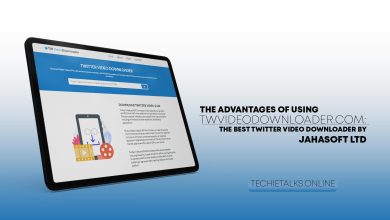- The best part is that you can still be an extra ordinary entrepreneur while keeping your regular job.
A Quick Suggestion:
Don’t Ever Let Your 9 To 5 Job Get in Your Way of Dreams of Starting a Business. Whether You Want To Enjoy Entrepreneurship or Wanting to Get The Financial Freedom, These Best Business Ideas Can Help You Achieve it.
What’s More? You Just Need To Put Your Few Hours in a Week to Make This Happen.
Let’s Get Started!

“Get Out of My Dreams, Get Into My Car”
Your vehicle may hold the key to being your own boss in the on demand economy.
Remember, Driving for Uber or Lyft Won’t Replace Your Regular Paycheck, It can Bring a Fixed Stream of Income.

“One Man’s Trash is Another Man’s Treasure”
You can make money selling your unwanted new or used items on websites like eBay, Amazon, Daraz and many other legit websites.
Remember, That this enables you to work virtually from anywhere with just a Connection of Internet. eBay business allows you to choose your working hours.

“A Way with Words”
Freelance Writing is one of the fastest and on demand business to start. Copyediting, Proofreading and Copywriting services can pay you a very high amount of money, If you do it in the right way.
There are tons of websites that allows you to create your Gigs and let the world knows you can provide these services. ie: Fiverr, Upwork, ETC.

“Online Teaching, TEACHER”
If you have any type of skills whether teaching English, Music, Computer, Maths, Programming ETC.
Consider tutoring students virtually via Skype or One can easily create complete course and publish on Udemy website.

“Dogs are a Man’s Best Friend”
Why not turn your love/passion of dogs into a business?
One can easily invest in multi-lead collars and leaches and walk three or more dogs at the same time. Set aside for at least 30 minutes to an hour to take out Fido and his friends.
“That money is going into things like dog walking, grooming and training services, which are all activities that in many ways were pioneered and developed by side-giggers.”

“I Will Be There For You”
Virtual assistance can help out the business owners and entrepreneurs with tasks which can be performed via Remotely.
Example: Calender Management, Scheduling, Answering Emails, Research or Posting Content on Social Media ETC.

“A Place For Everything and Everything in Its Place”
One can start by restoring order in people’s homes by offering services such as professional organizer or residential home cleaner.
Starting from removing clutter in a garage to creating a proper filing system, a professional organizer usually works by the hours.
Suggestion: If you don’t mind getting your hands dirty, a cleaning business might be right for you.

“Personal Shopper”
If you are a type of person who loves shopping, this could be a great idea for you.
You can earn good money and have fun on same time shopping for individuals who are too busy to shop, who don’t like to shop or who can’t get out to do their own shopping.
Many people loves to hire personal shoppers to select Gifts for any number of special occasions, including birthdays, births, weddings, holidays, and anniversaries.

“Homebased Alteration Service”
Calling people with sewing skills and a sewing machine!
Its the best time to provide garment and fabric alteration service right from convenience of a home workspace, and earn a bundle of money in the process.
Dry Cleaner, Fashion Retailers, Uniform Retailers, Bridal Boutiques, Costume Shops, Drapery Studios, and Consignment Clothing Shops.

“Children’s Party Service”
Children’s are the most loved in everyone’s family, starting and operating a children’s party service. and this is a hot business idea:
It’s almost the end of the year, Parents are spending much more on their kids parties than they did a generation ago.
Its a social media age, everyone wants to look good and rich on Social Media, No matter what but they can pay you great amount of money.

“Cake and Cupcake Bakery”
Making and Decorating and than Selling one of its kind cakes and cupcakes for events from birthdays to weddings to anniversaries is a great business idea for hobby baker to pursue, and point to be noted its potentially very profitable.

“Personal Chef”
Take your pots and pans, cooking skills and love of food and hit the road as a personal chef for hire.
Personal chef services are becoming very popular and in demand for people who do not have the budge for a full scale catered event for other hosting small gathering not requiring complete catering services.

“Arts and Crafts Instructor”
Knitting, Painting, Printmaking and many other types of arts and crafts have gained very popularity these days.
People are more than willing to invest their earned money to learn.
If you have mastered an art or craft, why not train others and earn substantial profits for your efforts?
Day, Evening or Weekend classes can be taught from a homebased studio, rented commercial space, in partnership with crafts retailers, community center or school.




One Comment